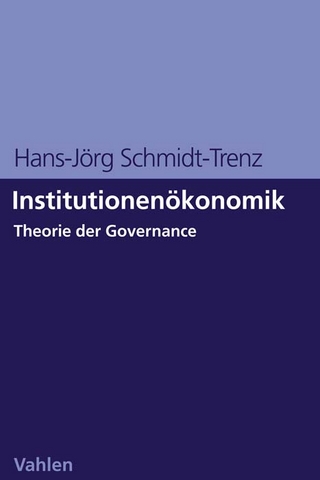
Microeconomics
Oxford University Press Inc (Verlag)
978-0-19-518962-9 (ISBN)
The most innovative feature of the book is its extensive coverage of recent research in behavioral and experimental economics. This research not only documents behavior inconsistent with some elements of traditional theory but also advances positive theories with superior predictive power. The research covered includes studies of loss aversion, reference-dependent preferences, the context and framing of choice, hyperbolic discounting and inconsistent intertemporal choice, predictable errors in updating probabilities, nonlinear weighting of probabilities, and prospect theory. The importance of this material was highlighted by the Swedish Academy of Sciences when it awarded the 2002 Prize in Economic Sciences to Daniel Kahneman (a psychologist who helped lay the foundations of behavioral economics) and Vernon Smith (an experimental economist). Although the topics are "advanced" in the sense that they are near the frontier of economic research and seldom-covered in textbooks, they are readily comprehended because they center on simple controlled experiments and relate to everyday concerns.
Covering results from behavioral and experimental economics along with traditional microeconomic doctrine involves re-balancing three key components of economics: issues, theory, and data. Traditional introductions emphasize issues, sketch theory, and use data only to illustrate theory. More advanced texts traditionally focus on theory, relegating issues and data to asides. Any data in traditional texts are usually from observational (non-experimental) studies. The relationship between theory and observational data is likely to be ambiguous until probed by advanced econometric methods and may remain so even then. Recognizing that few students have the econometric skills needed for serious analysis of observational data, some authors focus their texts almost exclusively on theory and issues. Although widely used, such texts discomfort students and professors to whom data-free exposition smells of indoctrination. In comparison to traditional texts, this book places more emphasis on experimental data, both when they support received theory and when they reveal anomalies. Thus the book covers both feed-lot experiments that generate conventionally shaped isoquants and choice experiments that cast doubt on the predictive value of expected utility theory.
The book presupposes nothing beyond high-school algebra and intellectual curiosity. It is intended for undergraduate classes and independent reading. Anyone writing for an audience that includes undergraduates must decide how to handle the growing gap between the rudimentary mathematical skills acquired in secondary schools, particularly in the United States, and the growing mathematical prerequisites for reading economists' professional journals. This gap must somehow be bridged if undergraduates are to be prepared for employment or graduate study in economics and related fields. To be fully prepared, students need not only classes in mathematics but also practice in formulating and solving quantitative economic problems. Too many texts either omit such problems or assume that students come fully equipped to handle them. In contrast, this text offers many opportunities to apply high-school algebra in an economic context and to develop basic skills in linear programming and risk modeling. Through footnotes and parenthetical remarks, it also encourages readers to make good use of any calculus they know. Exercises appear where appropriate in the text; solutions and supplemental problems are collected at the ends of chapters. When teaching from the book, I usually start each class by asking students if they had trouble solving any problems in the previous chapter and end class by helping students tackle the problems in the current chapter. By solving the problems students can make appreciable progress toward becoming competent economists.
John P. Burkett began teaching at the University of Rhode Island in 1971. He has held visiting appointments at Brown University, Kiev State University, and U.C. (Berkeley). He has taught comparative economics, econometrics and statistics, health economics, history of economic thought, international economics, macroeconomics, and microeconomics. He is active in the Phi Beta Kappa Society.
1: The Origins and Scope of Microeconomics
2: Inputs, Outputs, and Costs
3: Cost Minimalization Using Linear Programming
4: Production and Costs
5: The Production Decisions of Competitive Firms
6: Marginal Products and Factor Proportions
7: Comparative Advantage and Gains from Trade
8: Allocation of Factors in Competitive Markets
9: Consumer Choice and Demand
10: Exchange and Product Assortment
11: Loss Aversion and Reference-dependent Preferences
12: The Context and Framing of Choice
13: Labor Supply
14: Monopology and Monopsony Power
15: Oligopoly and Oligopsony: Classic Models
16: Economics and Time
17: Saving Behavior
18: Inconsistent Intemporal Choice
19: Economics of Risk
20: Behavior in the Face of Risk
21: Game Theory and Modern Models of Oligopoly
22: Time, Risk, and Investment
23: Technological Change
24: Assets, Investment and Financial Markets
25: Government's Roles in the Economy
| Erscheint lt. Verlag | 25.5.2006 |
|---|---|
| Zusatzinfo | 11 halftones, 148 line drawings |
| Verlagsort | New York |
| Sprache | englisch |
| Maße | 254 x 183 mm |
| Gewicht | 819 g |
| Themenwelt | Wirtschaft ► Volkswirtschaftslehre ► Mikroökonomie |
| ISBN-10 | 0-19-518962-0 / 0195189620 |
| ISBN-13 | 978-0-19-518962-9 / 9780195189629 |
| Zustand | Neuware |
| Haben Sie eine Frage zum Produkt? |
aus dem Bereich


